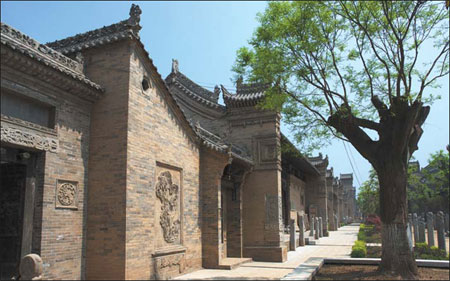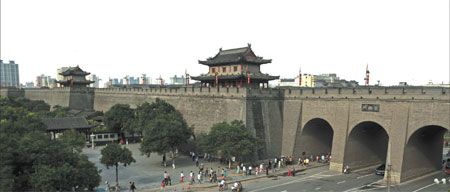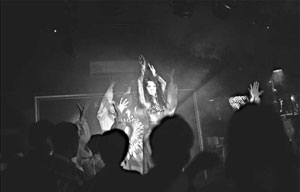Western capital holds surprises for foreign visitors
|
The Guanzhong Folk Art Museum has a classy array of ancient residences relocated from different areas of Shaanxi. |

When visiting Xi'an, the capital of Shaanxi province and starting point of the legendary Silk Road, it's common to visit historic destinations in the 3,100-year-old city such as the City Wall, Giant Wild Goose Pagoda and of course the Teracotta Warrior Museum.
But two popular destinations with Chinese tourists that are not usually on the radar of visiting foreigners are the Guanzhong Folk Art Museum and the mountain known as Huashan.
Huashan is one of China's five main peaks, and one of the country's tallest at 2,160 meters. It is near the small town of Huayin about 120 kilometers east of Xi'an.
Visitors can take a gondola ride to mid-mountain or they can walk all the way up on the stairs built around it. In the morning the gondola lift is not encumbered with long lines, so it's best to get there early if that's how you want to go up the mountain.
The only disadvantage to arriving early is the heavy mountain mist. About 2 pm it begins to clear and surrounding peaks become more visible.
Plan on spending the whole day there, you won't regret it. Food, water and other beverages are provided all the way up the mountain at various small restaurants and food stands.
|
The Changle Gate is a well-preserved city wall built during the Ming Dynasty (1368-1644). |
The distance from Xi'an could be a detraction for foreigners, but bus transportation makes it very easy to get to and from the capital city. I went on a Saturday and the mountain was packed with Chinese hikers of various ages, but I did not see one foreigner outside of my travel group.
The other must-see destination, located at the foot of Wutai Mountain in Chang'an county not far from Xi'an, is the Guanzhong Folk Art Museum.
Founded by Wang Yongchao, a respected and distinguished Chinese scholar and historian, the museum's focus is to preserve, protect and rescue China's folk art heritage.
The museum is situated at the foot of South Wutai Mountain, a holy Buddhist area during the Sui and Tang dynasties.
The museum covers 82 acres and was built in the typical Ming and Qing garden styles.
Since the museum was founded, it has collected 33,600 cultural relics from the Zhou, Qin, Han and Tang dynasties. All of the relics, courtyards and homes originally stood in other cities throughout Shaanxi province were moved and restored at the museum.
Since the late 1980s, the museum has been collecting homes and courtyards from the Ming and Qing dynasties that were once inhabited by merchants, bankers and other businessmen from those eras.
Over 8,600 stone horse hitching posts from various dynasties are also on display. The museum has been successively supported as a key municipal and provincial project during the 11th and 12th five-year plans (2006-2016) and has been appointed by the Ministry of Culture as a national demonstration base for China's cultural industry.
The museum also features live performances of Chinese folk songs and dances dating back to the late 19th and early 20th century. Walking around the outdoor museum places the visitor right in the middle of China's history.
Xi'an has a lot to offer to any visitor, but once you've hit the main attractions inside the city, don't hesitate to hop on a bus and explore.
If Huashan and the Guanzhong Museum are popular with Chinese tourists, then think how much foreigners would enjoy the two locales if only they were more aware of them.
|
|
|


















